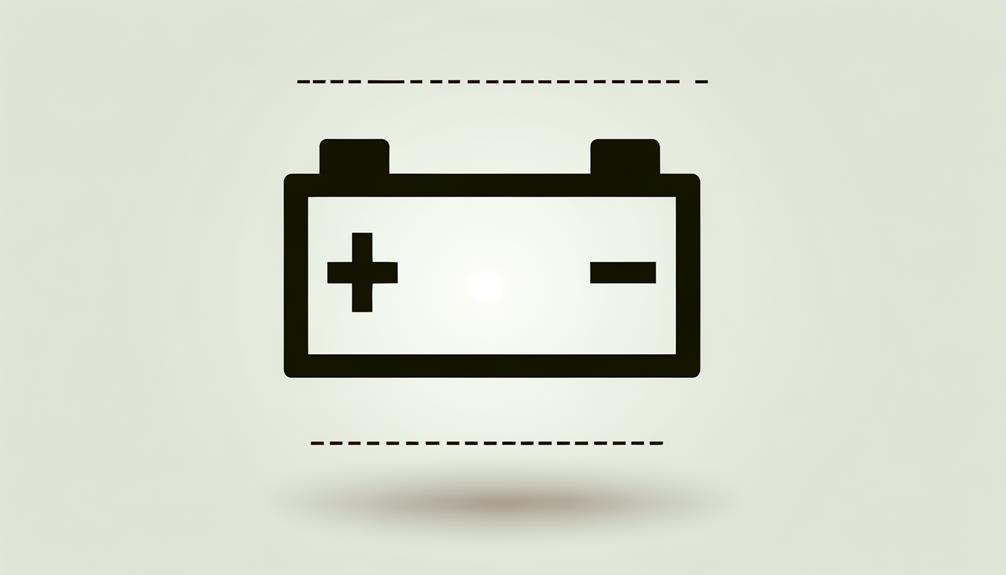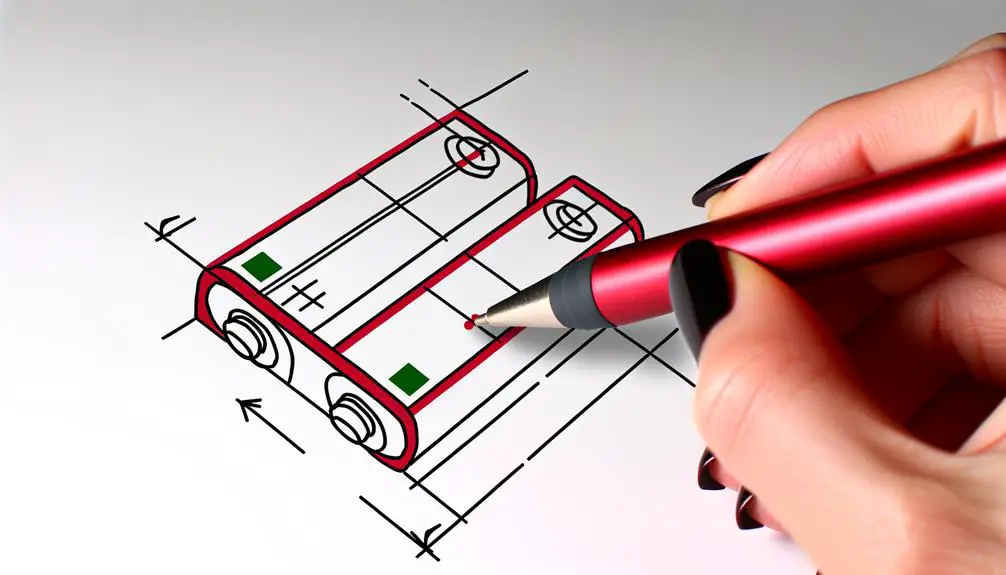How to Recognize and Use the Battery Symbol in Schematics
The schematic symbol for a battery is essential in circuit diagrams. It consists of two parallel lines of varying lengths, where the longer line indicates the positive terminal and the shorter line indicates the negative terminal.
This standardized representation aids in identifying polarity and ensuring proper circuit function. Variations of the symbol exist for different battery types, including unique annotations for rechargeable batteries and specific chemistries.
Correct usage and clear representation are vital for avoiding errors, simplifying troubleshooting, and promoting effective communication. Understanding these symbols' nuances can greatly impact the accuracy and reliability of electrical designs.

Key Takeaways
- The battery symbol consists of two parallel lines, with the longer line representing the positive terminal and the shorter line indicating the negative terminal.
- Variations of the symbol may include multiple lines to represent multiple cells or configurations like series and parallel connections.
- Rechargeable batteries and specific chemistries have unique annotations within the standard battery symbol framework.
- Correct polarity representation is essential to avoid reverse current flow and ensure proper circuit function.
- Standardized symbols enhance communication among engineers and ensure accurate circuit design and documentation.
Basic Battery Symbol
The basic battery symbol in electrical schematics consists of a pair of parallel lines of differing lengths, representing the positive and negative terminals. The longer line denotes the positive terminal, while the shorter line signifies the negative terminal.
This differentiation is essential for proper circuit design, as incorrect polarity can lead to malfunction or damage. The simplicity of the symbol belies its significance in indicating the potential difference and direction of current flow.
Engineers must recognize this symbol to confirm the correct orientation and integration of power sources within circuits. Understanding the basic battery symbol is fundamental for interpreting and creating accurate electronic diagrams, which are vital for the successful implementation of electrical systems.
Variations of the Symbol
Several variations of the basic battery symbol exist to represent different types and configurations of batteries in electrical schematics. For example, a single cell is often depicted as one long and one short parallel line, while multiple cells are shown as repeated pairs of lines.
Additionally, rechargeable batteries may incorporate a specific marking, such as the letter 'R' or a curved arrow, to distinguish them from non-rechargeable counterparts. Symbols for specific battery chemistries, like lithium-ion or nickel-metal hydride, may also include unique annotations.
Parallel and series configurations can be indicated by stacking or aligning multiple battery symbols, respectively. These variations guarantee precise communication of battery specifications and configurations within complex electrical designs.
Symbol in Circuit Diagrams

Accurately representing the schematic symbol for a battery in circuit diagrams is fundamental for ensuring the correct interpretation and implementation of electrical designs.
The battery symbol typically consists of two or more parallel lines of different lengths. The longer line denotes the positive terminal, while the shorter line indicates the negative terminal. This standardized representation aids engineers in identifying the polarity and voltage source within the circuit.
Variations might include additional lines to represent multiple cells in a battery. The precise placement and orientation of the battery symbol within a circuit diagram eliminate ambiguity, enabling seamless integration with other components.
Mastery of these symbols is essential for professionals to convey complex information efficiently and avoid misinterpretation in circuit design.
Importance in Design
Consistently integrating the appropriate schematic symbol for a battery within circuit designs is crucial for guaranteeing accurate interpretation and functionality of electrical systems. Precision in symbol usage helps reduce errors, simplifies troubleshooting, and promotes effective communication among engineers. A standardized symbol enhances the reliability of simulations and the fidelity of physical implementations. Below is a comparative table highlighting key aspects:
| Aspect | Correct Symbol Usage | Incorrect Symbol Usage |
|---|---|---|
| Interpretation | Consistently clear | Potentially ambiguous |
| Functionality | Secures proper circuit operation | Can lead to malfunction |
| Communication | Uniform understanding | Miscommunication risks |
| Troubleshooting | Efficient fault identification | Time-consuming diagnostics |
Employing the appropriate symbols is indispensable in maintaining design integrity and operational efficiency.
Common Mistakes

In the field of circuit design, overlooking the importance of standardized schematic symbols for batteries often results in critical errors that compromise both the interpretation and functionality of electrical systems.
Common mistakes include:
- Incorrect Polarity Representation: Mislabeling the positive and negative terminals can lead to reverse current flow, damaging components.
- Ambiguous Symbol Usage: Using non-conventional symbols or variations can create confusion, leading to misinterpretation during troubleshooting or assembly.
- Inconsistent Symbol Scaling: Disproportionate scaling of battery symbols relative to other components can result in misreading of the schematic layout.
These errors not only hinder effective communication among engineers but also heighten the risk of operational failures.
Adherence to standardized symbols guarantees coherency and reliability in circuit design documentation.
Conclusion
To sum up, the schematic symbol for a battery serves as a cornerstone in electrical circuit design, providing a universal language for engineers and designers.
Variations of the symbol accommodate different battery types and configurations, ensuring precision in circuit diagrams. Recognizing and understanding these symbols is essential to avoid common pitfalls in design.
As the saying goes, 'a picture is worth a thousand words,' and within this framework, the battery symbol encapsulates crucial information succinctly and effectively.






